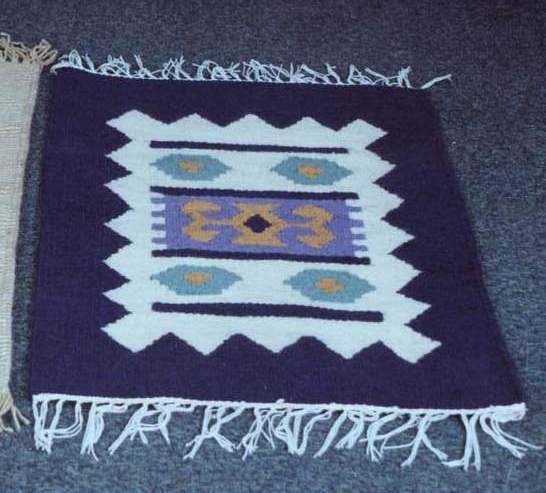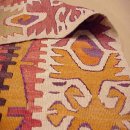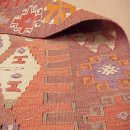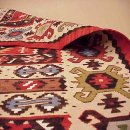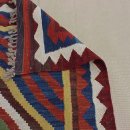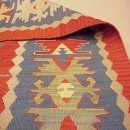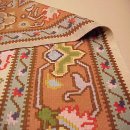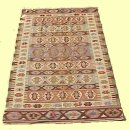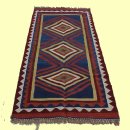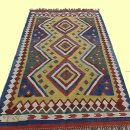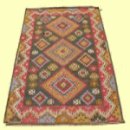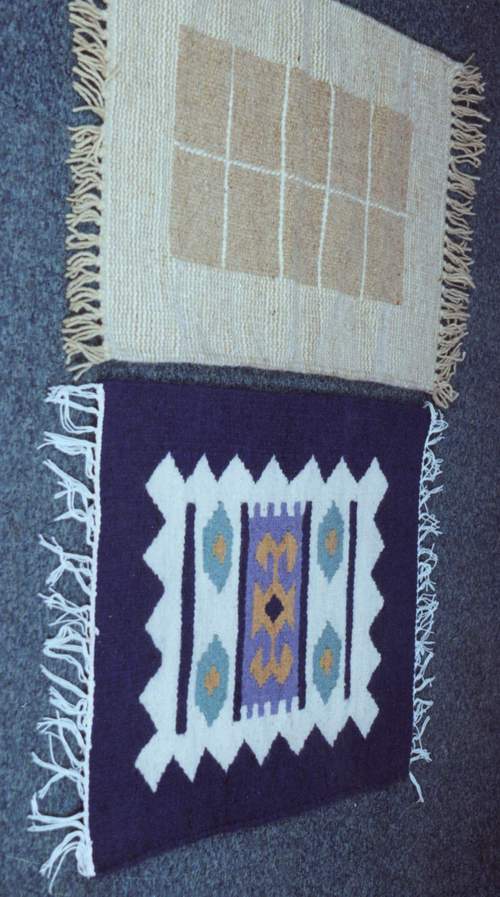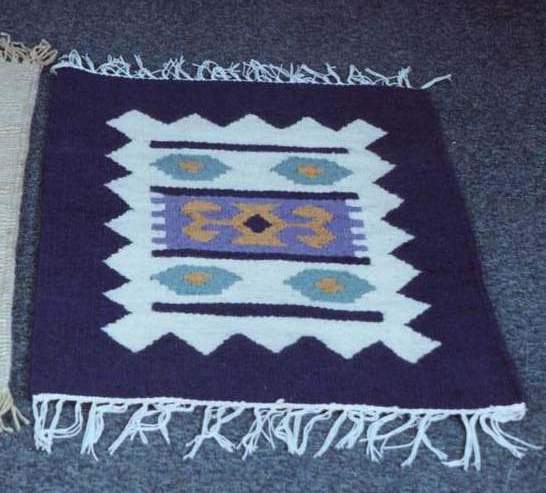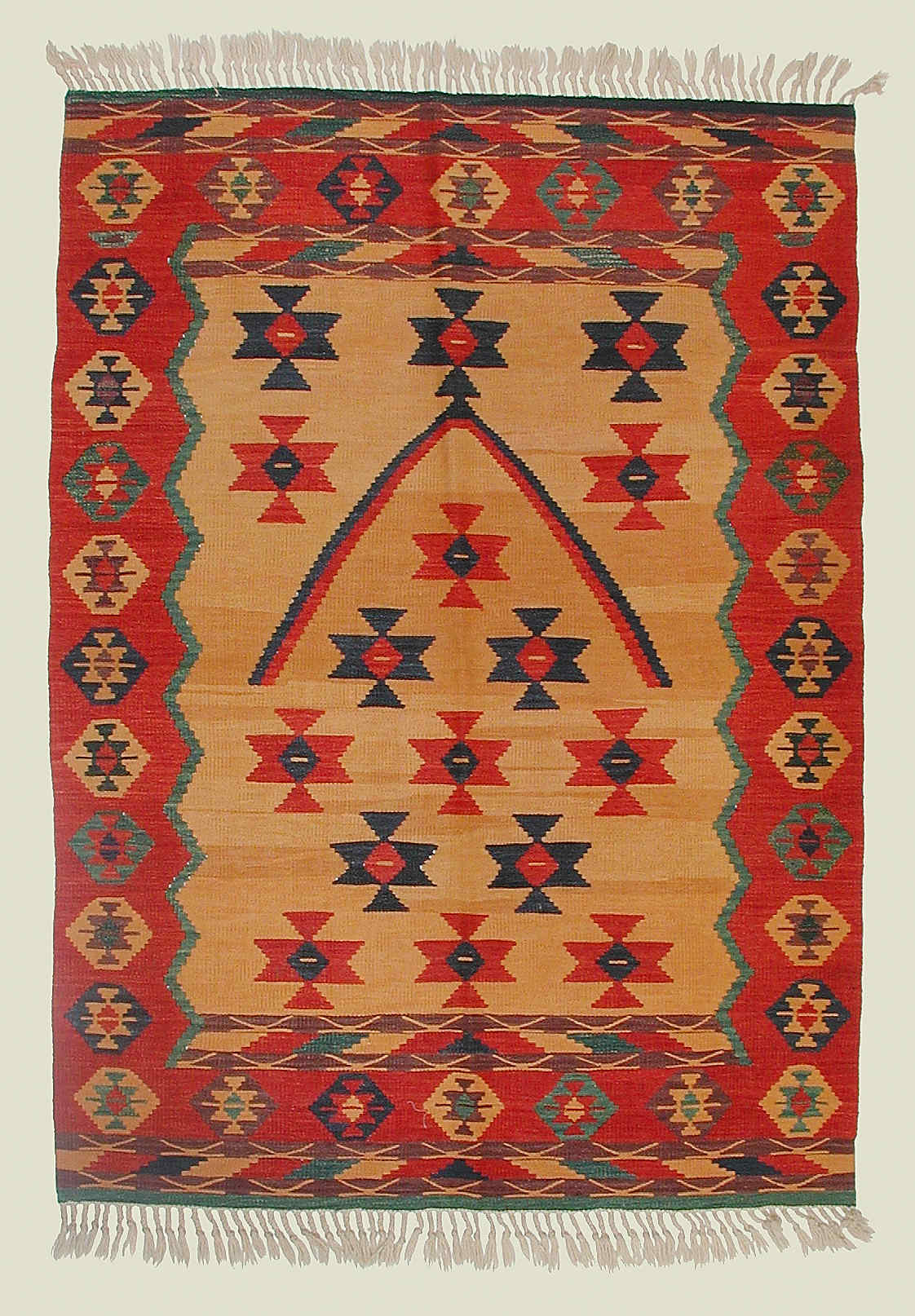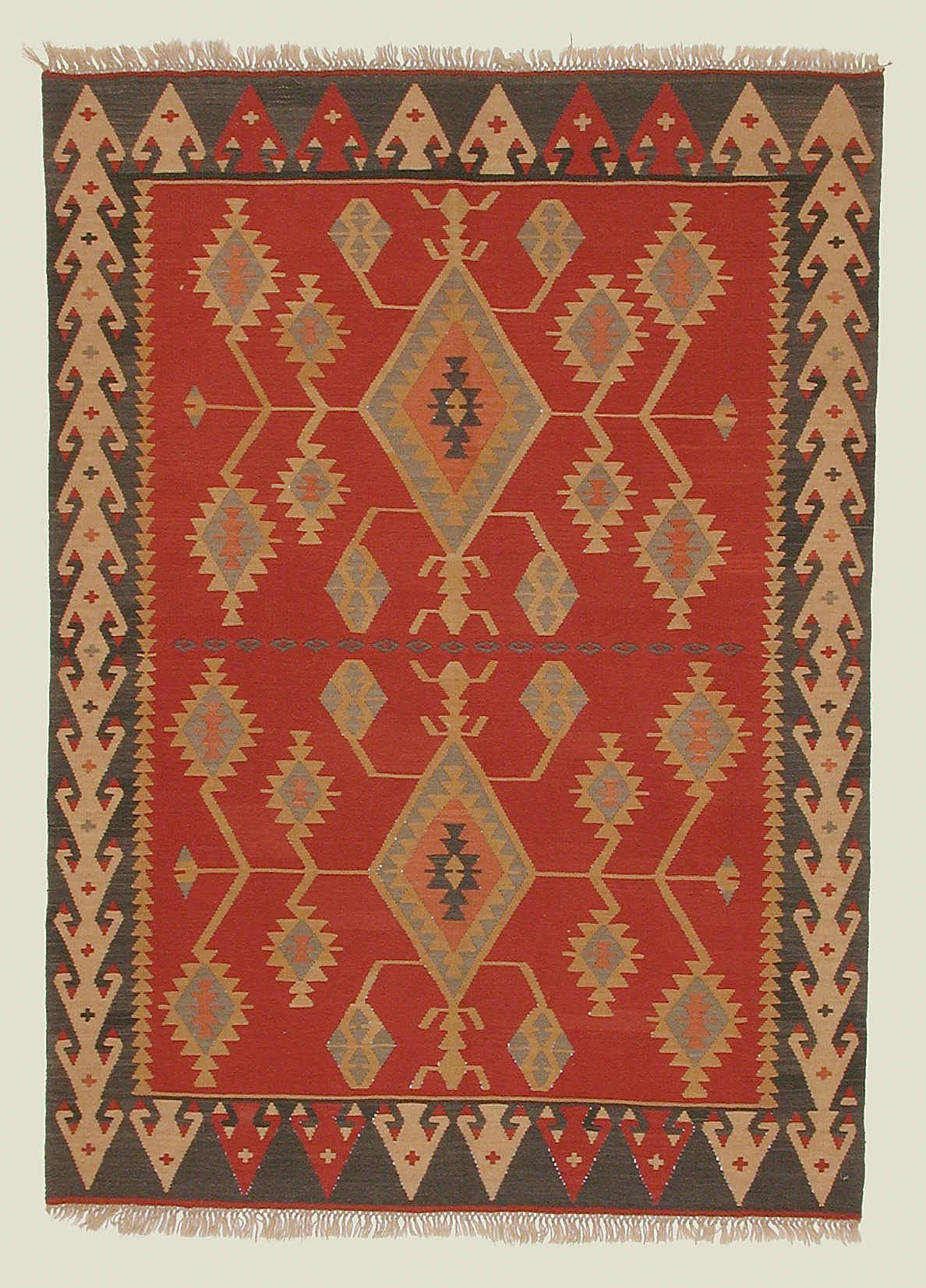Very fantastic kilim with many colors. It is made of 100% natural Camel Wool or Wool with Cotton
Login to view prices
-
Kilim define as it is a common flat weave art of rug, usually produced by tribal weavers. Kilims are flat-weave rugs originally produced handmade of NATURAL SHEEP WOOL in a village or tribal environment. The designs tend to be geometric, often incorporating various symbolic motifs. A prominent characteristic of kilim rugs is the slits along the warp of the rug wherever there is a change of color. ..
What is Kilim?
Kilim define as it is a common flat weave art of rug, usually produced by tribal weavers. Kilims are flat-weave rugs originally produced handmade of NATURAL SHEEP WOOL in a village or tribal environment. The designs tend to be geometric, often incorporating various symbolic motifs. A prominent characteristic of kilim rugs is the slits along the warp of the rug wherever there is a change of color. ..
The difference between a kilim and a carpet or pile rug is that whereas the design visible on the kilim is made by interweaving the variously colored wefts and warps, thus creating what is known as a flatweave, in a pile rug individual short strands of different color, usually of wool, are knotted onto the warps and held together by pressing the wefts tightly against each other. In this case the whole design is made by these separately knotted strands which form the pile, and the patterns become clearly visible after any excessive lengths of the knotted materials are shorn off to create a level surface.
How Kilim is made?
From there,, From the heart of this far deserts where shining sun, hot sands and purity of the nature, This art had been come to present the creativity of ancient man and how he was express his feeling through his art.. As Falcon used to, we had to follow very badlands to reach handcrafters directly to be able to offer best competitiveness to our customers..
Yes, They are poor people but have great talent.. All what they have are simple loom, creativity and talent of their hands.. You will feel all of that when you look at any piece of your order.. You will feel that you occupied great part of their life and you will assure value of your money..
What does it take to make a kilim? In material terms, not very much really. A loom, a beating comb, a shuttle (optional) and a knife or scissors are the simple tools needed and wool is the primary material. Cotton, silk and animal hair (goat, camel, or horse) are also sometimes used, mostly in conjunction with wool. Gold or silver thread, beads, and other small decorative baubles that strike the weaver’s fancy are also sometimes inserted into the design, but not very often.
The earliest known illustration of a loom appears on an Egyptian bowl dated to ca. 4000BC, but its invention is believed to have been made even earlier, at the dawn of civilization. Today, though looms may vary in type, size and complexity of construction, in most cases they are quite simple structures of wood with, perhaps, a few metal parts.
The function of the loom is to hold the longitudinal strands (known as warps) under tension so that the horizontal strands (called wefts) can be woven between the warps to produce a kilim. Custom and circumstances usually determine the type of loom used. Sedentary villagers usually employ a fixed vertical loom while nomads, for the sake of portability, generally employ a horizontal ground loom where stakes driven into the ground hold the loom in position. Adjustable looms with a fixed width but with a mechanism permitting the completed horizontal kilim section to be moved out of the way of the weaver are usually found in more sophisticated contemporary kilim workshops.
A beating comb is usually just a larger and cruder version of the familiar hair comb; it is usually made of wood, metal, bone, horn, or some combination of these materials. Its function is to compress, i.e. “beat down”, succeeding lines of wefts against the preceding ones so that the kilim produced is tightly woven.
The shuttle is basically a stick with notches in the ends. When used, the weft end is placed in the notch and the shuttle is then inserted between alternate warps to produce a weave, but weavers often prefer to dispense with the shuttle and pass the weft between the warps by hand.
A knife or scissors are used to cut and trim the wefts and warps; their function needs no further elaboration.
Wool is the primary and often the only material used to make a kilim. Many kilims are made totally from wool where it is used for both warps and wefts, and Wool is the primary weft material used with cotton warps, which accounts for the great majority of all kilims. This popularity of wool is due to its inherent qualities. It is supple, durable, handles easily when spun or woven, readily takes on dyes and, most important, is in plentiful supply in kilim-making regions. Whatever the source, however, it behooves the kilim maker to use the best wool available to ensure high quality of the final product if it is to be competitive in world markets. It is generally acknowledged by experts that good quality wool is used today in the production of kilims of repute, thus ensuring them long life – provided they are properly treated.
Our Wool is of 2 quality,
1-Super quality which is called (Tops or Extra). The wool is similar to one we use in clothes. The wool thread in this type is very thin and take great effort and time. The artisan take 10-15 days to do 1 square Meter of Kilim in this type. Any design or drawing could be done in this type.. We refer to this type of Wool by * sign. The Kilim in this case is very light weight. The touch is very soft..
2-Good quality wool, The wool thread in this case is thick and easier than the first one to do and with limited drawings. The weight of Kilim is heavier than first type..
Cotton is commonly used for warps because of its high strength and plentiful supply. Also, because it keeps its shape well in use, retains its natural whiteness with age, and because it can be spun into fine, thin strands, it is commonly interwoven in places to highlight certain aspects in the overall design executed mainly with wool.
Silk was and remains the most luxurious material, and though flatweaves made from silk are now rare they are still produced. It is very luxurious and very expensive in comparison with the wool type
Dyes
For many dyes were obtained only from natural sources, plants, animals and minerals, and the art of dyeing achieved great heights elevating the dyer to high social status. Among early nomads he may also have been the shaman, the priest/magician entrusted with guarding all the secret rituals of the tribe, including dyeing. Ancient China and Pharaonic Egypt are both known to have produced textile dyes and during Phoenician and Roman eras purple dye from Tyre was the rage of the rich, soon to be reserved only for the Imperial family of the Byzantine Empire.
This rich heritage of both nomadic tribes and sedentary communities continued to bring color to the world until the formulation of synthetic dyes in the middle of the 19th century A.D. – and then the battle was joined. But before giving some account of the still ongoing fracas between the ‘naturalists” and the “synthesists” at least a brief look is called for at the natural dyes that have served humankind so long, and continue to do so in coloring many kilims even today.
Natural colors wool material: Made of pure sheep natural wool. These are limited colors vary from yellow to dark brown or even black (Like color of origin which is sheep and Camel wool)
Kilim symbols, their various names and surmised meanings presented here are only the bare building-blocks of kilim language. They acquire depth, nuance and emotional content through immersion, a process that is thoroughly rewarding since it brings us in contact with the great inner universe of our common human ancestry.
Uses of Kilim:
1- Some use it as traditional rug to add natural and handmade touch for home decor
2- Some use it to promote their name and logo ..
3-Kilim acts as Heat insulator so in cold counties, They use it to cover wall to isolate from cold as Kilim absorbs moisture and hotness..
4- In pillows and bags
Private Designs and Size Programs:
Your custom design and size program are welcomed..
We guarantee that you will get the lowest prices in the world.. We eagerly looking forward to help those people and offer the best prices for their art to promote this beautiful line of business..
You may would like to carry YOUR BUSINESS NAME, YOUR LOGO OR ANY DESIGN YOU LIKE.. Please just let us to know your design and WE WILL CARRY IT FOR YOU
Notes:
- Our Kilim is made of 16 or 25 knots per cm for wool Kilims
- The minimum order to order certain design in certain size is 6 pieces from this design in this size
- The order of our assortment from the stock has no minimum. Please see Trial order section.
- Packing: Each Kilim will be packed in splendid carton box which may carry your name and logo
- We make handmade Silk carpets under confirmed contract
- We have the capability of making Kilim according to custom designs.
- You may would like to use the Kilim tableaus to promote your business name…Please let us serving you and carry your imagination
- Any of published design could be carried in both wool qualities (Please see above). So You may like specific design which marked wool* (Which means superior quality) in normal quality wool and enjoy the difference in the price..
We fully guarantee the best prices all over the world. We add very minimal profit to support these producers and we collect Kilim ourselves from producing families and this enable us to offer best.
As This art is completely handmade and we collect them from many producing families, we put high restrictions and very alert quality control department which enable us to offer best quality
At Falcon we are only happy if our customers are happy. We promise that we will do our best to get your satisfaction
Additional information
| Weight | 500 kg |
|---|---|
| Dimensions | 100 × 100 × 150 cm |
| Custom Branding & Packaging | Yes, OEM Custom banding, designing and packaging are available for that product |
| Payment Terms | Credit Card, Paypal, Cash Against Documents CAD, Western Union, Letter of Credit LC, Telex Transfer Swift TT, Wise (TransferWise) |
| Country of Origin | China, Turkey, Egypt |
| Shipping Methods | Sea Shipping |
| Ship from | China, Egypt |
-
Login to view prices
Jasmine Infused Oil (Natural Jasmine oil or flowers infused in Carrier Oil)
Login to view prices -
Login to view prices
Marjoram Origanum majorana Essential Oil
Login to view prices -
Login to view prices
Wheat Germ Triticum vulgare Oil Organic & Conventional
Login to view prices

